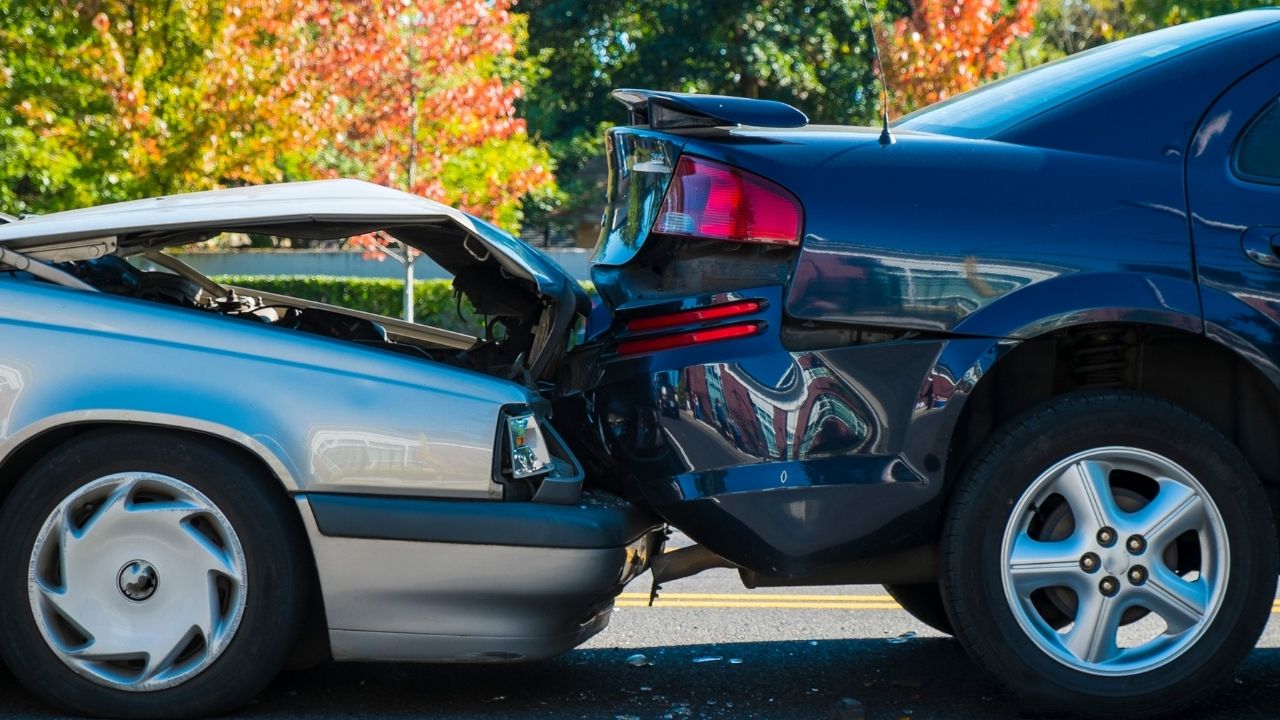Lifestyle
Pinellas County and the Surge of Auto Accidents: Is Population Growth to Blame?

Nestled along Florida’s Gulf Coast, Pinellas County boasts sun-kissed beaches, captivating waterfront views, and a mosaic of vibrant communities that beckon both tourists and new residents alike. Over recent years, this allure has translated into a pronounced surge in population growth, as more individuals and families choose to call this coastal gem their home.
However, with this growth comes a myriad of challenges that need addressing. Among these, traffic-related issues have rapidly risen to the top of community concerns. As roads see more vehicles and intersections become busier, the safety of residents becomes paramount. This has led to a pressing question that resonates in discussions across the county: Is the escalating population directly contributing to a higher number of car accidents in places like Largo?
Linking Population Growth to Car Accidents
Firstly, it’s important to understand the correlation between population growth and auto accidents. As more people move into the area, there are naturally more vehicles on the road. This increase in vehicular traffic can lead to congestion, which, in turn, might result in a higher probability of collisions. Additionally, new residents might be unfamiliar with local traffic patterns, potentially contributing to mishaps.
What Pinellas County is Doing
Acknowledging the challenges that come with growth, Pinellas County has taken a multifaceted approach to tackle the potential rise in car accidents. This includes updates in infrastructure, the adoption of advanced technology, and the introduction of new laws.
Infrastructure Enhancements:
- Road Expansions and Upgrades: Recognizing the increased traffic, Pinellas County has initiated projects to expand some of its major thoroughfares. Wider roads can accommodate more cars and potentially reduce congestion.
- Improved Signage: For those unfamiliar with the local roads, clear and abundant signage is crucial. The county has placed an emphasis on better, more visible signage to guide drivers.
- Pedestrian Safety: With more people, there’s also an increase in foot traffic. Crosswalks, pedestrian signals, and safety islands have been added or improved in busy areas to ensure pedestrian safety.
Technological Innovations:
- Smart Traffic Lights: Leveraging technology, Pinellas County has started implementing smart traffic lights. These lights adjust in real-time based on traffic conditions, helping to ease congestion and reduce the chances of accidents.
- Surveillance Cameras: To monitor traffic conditions and respond promptly to accidents, more surveillance cameras have been installed at major intersections.
- Data Analytics: The county is using data analytics to understand traffic patterns, peak times, and high-risk zones. This data-driven approach allows for better planning and resource allocation.
Legislative Measures:
- Stricter DUI Laws: Recognizing the risk posed by intoxicated drivers, Pinellas County has pushed for stricter DUI laws, ensuring those under the influence are kept off the roads.
- Distracted Driving Laws: With the rise of smartphones, distracted driving has become a significant concern. The county has passed laws to penalize drivers who use their phones irresponsibly while driving.
- Speed Limits: In areas with high pedestrian traffic or where accidents are frequent, the county has reviewed and, where necessary, reduced speed limits.
Challenges and the Road Ahead
While these measures are commendable, challenges persist. The integration of technology requires funding and training. Infrastructure enhancements might lead to short-term traffic disruptions, and there’s always a period of adjustment when new laws are introduced.
However, the proactive stance of Pinellas County demonstrates a commitment to ensuring the safety of its residents and visitors. As the county continues to grow, its approach to managing and mitigating car accidents serves as a model for other regions experiencing similar growth surges.
The undeniable growth in population inherently presents challenges that regions like Pinellas County must confront head-on. Among these challenges, traffic-related issues often rise to the forefront given their direct impact on daily life, commute, and overall safety. As roads become busier and neighborhoods more congested, the ripple effects can be felt throughout the community, from longer travel times to the heightened risk of accidents.
Nevertheless, Pinellas County’s response has been both proactive and comprehensive. By integrating updated infrastructure, leveraging technological advancements, and instituting robust legislative measures, the county showcases its dedication to not just managing but anticipating potential traffic problems. For those who call Pinellas home or have vested interests in its future, there’s a collective responsibility to stay informed about these initiatives, offer support where needed, and adapt to the evolving landscape. This collaborative approach ensures that Pinellas County doesn’t just grow in numbers, but flourishes as a community where safety and prosperity go hand in hand.
Lifestyle
How Magic Moment Resort Became the Pioneer of a New Era: The First-Ever Dazzler Select by Wyndham

In Central Florida’s packed landscape of family hotels and theme park lodgings, a unique kind of property has emerged. Magic Moment Resort & Kids Club in Orlando is earning attention from traveling families for a simple reason. It delivers joy, warmth, and convenience at a smart value that keeps Disney dreams accessible rather than overwhelming.
By joining Wyndham, Magic Moment Resort unlocks the strength of a global powerhouse, gaining worldwide visibility, advanced technology, and access to Wyndham Rewards, the largest hotel loyalty program on the planet. This strategic move expands its reach, builds guest trust, and amplifies its impact, all while preserving the unique identity that sets it apart.
Just a short drive from the gates of Walt Disney World, the resort sits along the palm-framed stretch of West Irlo Bronson Memorial Highway. The location has long been known for its tourism bustle, yet Magic Moment has carved out a softer identity. It feels playful and colorful, but also intentional. It is designed by a family for other families, and that perspective shapes every experience on the property.
A Philosophy Rooted in Family Connection
Magic Moment Resort was built with a belief often forgotten in today’s tourism industry. Family vacations should feel uplifting instead of stressful, and affordability should not come at the expense of comfort or creativity.
Check-in feels more personal than transactional. Parents arrive with strollers, snacks, and tired children. The staff seems to understand this rhythm instinctively. The energy is warm, the pace is easy, and the tone is set long before anyone even enters the room.
Unlike competing hotels that charge a steep premium for proximity to the parks, Magic Moment focuses on smart value without compromise. Its pricing strategy is refreshingly straightforward. Families can stay five minutes from Disney without draining their travel budgets. For many guests, that difference helps shift resources from hotel costs to experiences. It means more character breakfasts, more souvenirs, and more freedom to enjoy the parks without financial tension following every decision.
Spaces Designed for Children and Considerate of Parents
Magic Moment is filled with color, but nothing feels overstimulating. Instead, the resort offers a sense of wonder scaled to a child’s imagination.
The themed family rooms are a highlight. Children step into rooms that feel lighthearted and whimsical, yet parents appreciate that they are also functional and comfortable. It is the atmosphere of a themed suite without the theme park price.
Its Kids Club and Teens Club reflect that same thoughtful balance. These spaces invite exploration and creativity for children and provide a nurturing level of supervision. Parents can enjoy an hour by the heated pool, relax in a shaded cabana, or simply take a quiet moment while knowing their children are safe and engaged.
The resort’s grounds encourage slow mornings and gentle afternoons.There’s a 30,000 sqf outdoor playground as well as peaceful corners for parents. Importantly, families are not asked to pay additional fees to enjoy them. Magic Moment’s amenities feel generous rather than transactional.
Unforgettable Days at the Parks
For families navigating a Disney vacation, convenience is often the true luxury. Magic Moment delivers this with a complimentary delicious hot breakfast that encourages everyone to sit and enjoy the start of the day rather than rush through it.
Transportation to the parks is included, which removes one of the most common stress points for visiting families. There is no parking lot maze and no long lines at the toll booths. Guests simply board the shuttle and begin their day with ease.
When the sun sets and everyone returns from a day of rides and parades, the resort becomes a place to unwind. Children head straight for the pool. Parents sip Starbucks coffee. The atmosphere is relaxed and bright, and the resort feels like an extension of the Disney experience rather than a pause from it.
A Value That Resonates with Families
What truly elevates Magic Moment is the balance it achieves between smart value and experience. The resort has cultivated a loyal following because guests feel they receive more than they pay for. More thoughtful design. More space for connection. More comfort without excess.
Affordability here does not signal minimalism. Instead, it allows families to breathe. It creates space for shared moments that are often overlooked in the rush of theme-park vacations. Children play freely. Parents unwind without guilt. Families spend more time together and less time navigating logistics.
A Resort Built with Heart
Magic Moment Resort & Kids Club stands out in a region overflowing with hospitality options. Its charm is not rooted in extravagance. It is grounded in sincerity. It reflects the belief that family travel should feel joyful, accessible, and full of color.
For families planning a Disney visit, it represents more than a place to sleep. It is a retreat where memories can form in the quiet moments as much as in the thrilling ones.
At Magic Moment, the greatest luxury is not an amenity. It is the feeling of being exactly where you are meant to be, together.
-

 Tech5 years ago
Tech5 years agoEffuel Reviews (2021) – Effuel ECO OBD2 Saves Fuel, and Reduce Gas Cost? Effuel Customer Reviews
-

 Tech6 years ago
Tech6 years agoBosch Power Tools India Launches ‘Cordless Matlab Bosch’ Campaign to Demonstrate the Power of Cordless
-

 Lifestyle6 years ago
Lifestyle6 years agoCatholic Cases App brings Church’s Moral Teachings to Androids and iPhones
-

 Lifestyle5 years ago
Lifestyle5 years agoEast Side Hype x Billionaire Boys Club. Hottest New Streetwear Releases in Utah.
-

 Tech7 years ago
Tech7 years agoCloud Buyers & Investors to Profit in the Future
-

 Lifestyle5 years ago
Lifestyle5 years agoThe Midas of Cosmetic Dermatology: Dr. Simon Ourian
-

 Health7 years ago
Health7 years agoCBDistillery Review: Is it a scam?
-

 Entertainment6 years ago
Entertainment6 years agoAvengers Endgame now Available on 123Movies for Download & Streaming for Free
